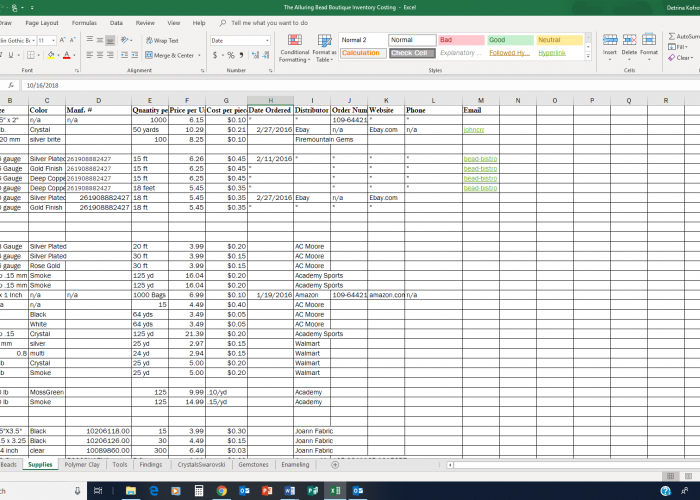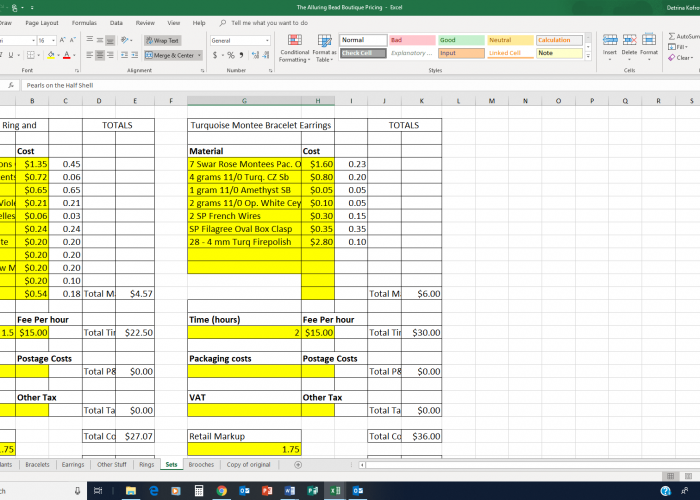I have watched many classes and videos by successful Jeweler’s over the last three years and have found many recurring themes, tips and advice amongst them.
I will be sharing these with you in the Jeweler’s Life Category of my Blog.
When I first started my journey into this new life, I made a point of doing my due diligence by researching and exploring options. My resources are limited, so I can’t afford to make too many bad purchases and/or mistakes. I will admit that I have been a slow starter and that I have made several mistakes along the way. But the keys to my limited success, are that I was able to track and document what works, what is worth the money, and what is not along the way.
I will be adding a few of my older posts to the blog over the next few weeks along with some long overdue revisions. These posts are intended to give you some good advice on basic tools and setups which will help you get an idea of how to get started and set yourself up for success from the very beginning.

With that in mind, let’s talk now about how to set up a system that will help you keep track of your purchases, the good, the bad and the totally terrible ones.
Personally, I used spreadsheets for many aspects of my business. Believe me, I am very much an amateur when it comes to Excel. But I understand the basics enough to use spreadsheets to my advantage.
I have three main spreadsheets that are invaluable to me. They Provide a wealth of info at my fingertips.
I did plenty of research to give myself a working guideline of the information that would be important for me to keep track of over time. Then I began to organize the info in a way the works for me. The great thing about Spreadsheets is that you can easily rearrange and add to your base documents. If you don’t have access to Excel, Google Docs has a free online spreadsheet app you can use.
Make sure to keep a back up of your documents somewhere in the world. Microsoft One Drive, Google Drive or a portable drive (thumb-drive) will work for this purpose.
Number 1 - Inventory Costing Sheet
This document is the one I use the absolute most. I document everything I purchase for my business, what it costs, where and when I purchased it, and how much It costs. I have pages in the sheet that I organized in the way that suits my purpose.
This spreadsheet is vital for Pricing my finished pieces, tracking purchases (you can make notes there too) and you can use it for tax purposes as well.
Click this link to download a Sample Inventory Workbook
I have a Skillshare Class that you may find very useful. The class provides in depth detail on how to set up your inventory sheet in Excel. I cover everything you will need to get you set up with a simple workable system, from Creating separate sheets for categories to Columns which help you label and organize the data. These instructions can be easily adapted for the Google Sheets App.
Number 2 - Jewelry Pricing Sheet
I must admit that I use a pricing sheet that I found online for free. With this sheet, you will input data from your Inventory sheet such as cost for materials and supplies and your time. The one I chose to use is provided by Jessica Rose of the Jewellry Academy from London. The sheet is already formatted to make certain calculations for you to give your wholesale and retail price per piece of jewelry.
In the beginning, I used it as is, but after I began to understand things a little more clearly, I have learned to adapt it to suit different levels of pricing my finished pieces. For example, I have created separate sheets within the document for categories of my jewelry such as Earrings, Bracelets, Necklaces/Pendants, Rings, Brooches and one for Sets.
I have also learned to manipulate the calculators for pricing items for commissioned based sales. I had to do this because some of my work is sold in a gallery that takes 40% and I needed a way to price my jewelry so I would still be able to make somewhat of a profit from these sales.
I want to thank Jessica Rose of the Jewelry Academy for this document. Not only does she give you the document, but she has a great Tutorial on how to set it up and use in in your day to day back office business. Click the link for the spreadsheet and the Tutorial.
PS. Jessica is brilliant, and she shares a ton of free info.
This brings me to my third sheet.
Number 3 – Wholesale/Retail/Commission Based Pricing List
Now that I have a wealth of info available to me from my first 2 spreadsheets, I needed a way to organize that data to make it easier to find when I needed it.
My third sheet is set up very simply. I created the exact same sheets in this document as the ones in my pricing sheet, based on the categories of my jewelry types. But the columns are set up to organize the info by name of item, wholesale price, retail price and commission-based price.
In this way, I can easily price any piece for a variety of sales venues, and I can refer to it when I want to run a sale to make sure I don’t undercut myself.
I strongly recommend that you set up an Inventory Costing Sheet as soon as you can. Whether or not you intend to sell your work, it is the perfect way to keep track of your materials, supplies and tools so that you can always refer to when you need to rebuy for your projects.
If you do intend to sell your work, the Pricing Sheet is vital, and Jessica has given us the perfect tool to use.
Finally, if you find yourself selling your work on a variety of venues, it will serve you well to set up a simple Pricing List.
I hope you find this information useful and check out my Skillshare Class to get started on organizing your back office.
Let me know what your think by leaving a comment on this post and use the forms on the right to Follow my Blog, Subscribe to my Newsletter and follow me on all my Social Media.
Thank you for all your support … have a great day.


